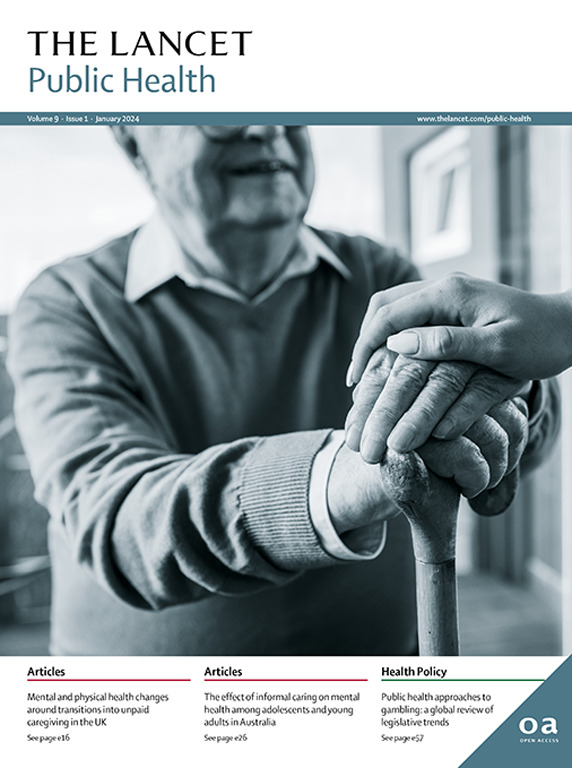Effectiveness of workplace interventions for health promotion
IF 25.4
1区 医学
Q1 PUBLIC, ENVIRONMENTAL & OCCUPATIONAL HEALTH
引用次数: 0
Abstract
Workplaces are an important setting for health promotion, offering established infrastructure, daily access to large populations, and opportunities to engage groups that are often under-represented in such initiatives. Although the effectiveness of workplace health promotion has been evaluated in reviews focusing on specific interventions, a comprehensive overview is needed. To address this gap, we present a quality-informed horizontal analysis encompassing 88 reviews and 339 meta-analysed effect estimates published between 2011 and 2024, covering a broad range of workplace health interventions. Mental health and stress reduction were the most frequently studied targets (36%), followed by weight management and cardiometabolic health (25%), health-related behaviours (22%), and musculoskeletal disorders and pain (17%). According to the GRADE assessment, 71 (21%) of the 339 meta-analysed effect estimates provided evidence of moderate quality, and the remainder were categorised as low or very low quality, with none classified as high quality. Mindfulness showed effectiveness across multiple stress and mental health outcomes, and cognitive behavioural techniques, stress management, physically oriented methods, and e-health interventions also showed some effectiveness. Multicomponent interventions had small but measurable effects on weight loss, glucose levels, fruit intake, and seasonal influenza vaccination uptake. A variety of behavioural, physical activity, environmental, multicomponent, and e-health interventions influenced physical activity and sedentary time at work. Consistent with findings found in non-occupational settings, effects at the individual level were generally modest but could be meaningful at both the workplace and population levels. In this Review we also discuss the broader public health implications of workplace health promotion, and highlight the strengths and limitations of the existing evidence and propose directions for future research.工作场所促进健康干预措施的有效性
工作场所是促进健康的重要环境,它提供了既定的基础设施,每天可以接触到大量人口,并有机会让在这类举措中往往代表性不足的群体参与进来。虽然在侧重于具体干预措施的审查中评估了促进工作场所健康的有效性,但需要进行全面的概述。为了解决这一差距,我们提出了一项质量知情的横向分析,其中包括2011年至2024年间发表的88项综述和339项荟萃分析效果估计,涵盖了广泛的工作场所健康干预措施。心理健康和减轻压力是最常见的研究目标(36%),其次是体重管理和心脏代谢健康(25%),健康相关行为(22%)以及肌肉骨骼疾病和疼痛(17%)。根据GRADE评估,339项荟萃分析的效果评估中有71项(21%)提供了中等质量的证据,其余的被归类为低质量或极低质量,没有一个被归类为高质量。正念在多种压力和心理健康结果中显示出有效性,认知行为技术、压力管理、以身体为导向的方法和电子卫生干预措施也显示出一定的有效性。多组分干预对体重减轻、血糖水平、水果摄入量和季节性流感疫苗接种有微小但可测量的影响。各种行为、身体活动、环境、多成分和电子卫生干预措施影响身体活动和工作时久坐时间。与在非职业环境中发现的结果一致,在个人层面上的影响通常不大,但在工作场所和人群层面上可能都有意义。在这篇综述中,我们还讨论了工作场所健康促进的更广泛的公共卫生影响,并强调了现有证据的优势和局限性,并提出了未来研究的方向。
本文章由计算机程序翻译,如有差异,请以英文原文为准。
求助全文
约1分钟内获得全文
求助全文
来源期刊

Lancet Public Health
Medicine-Public Health, Environmental and Occupational Health
CiteScore
55.60
自引率
0.80%
发文量
305
审稿时长
8 weeks
期刊介绍:
The Lancet Public Health is committed to tackling the most pressing issues across all aspects of public health. We have a strong commitment to using science to improve health equity and social justice. In line with the values and vision of The Lancet, we take a broad and inclusive approach to public health and are interested in interdisciplinary research.
We publish a range of content types that can advance public health policies and outcomes. These include Articles, Review, Comment, and Correspondence. Learn more about the types of papers we publish.
 求助内容:
求助内容: 应助结果提醒方式:
应助结果提醒方式:


